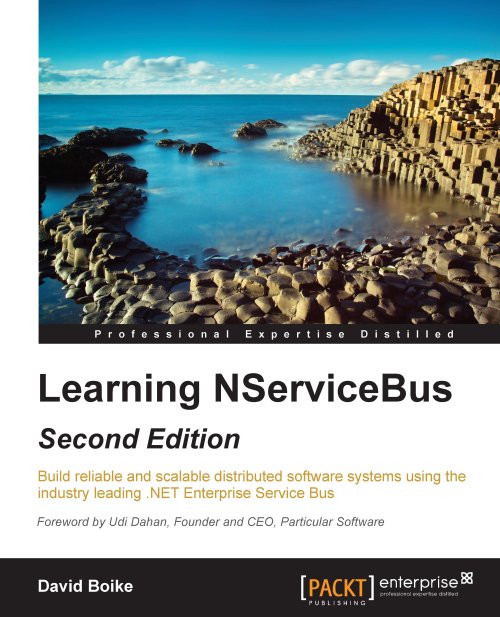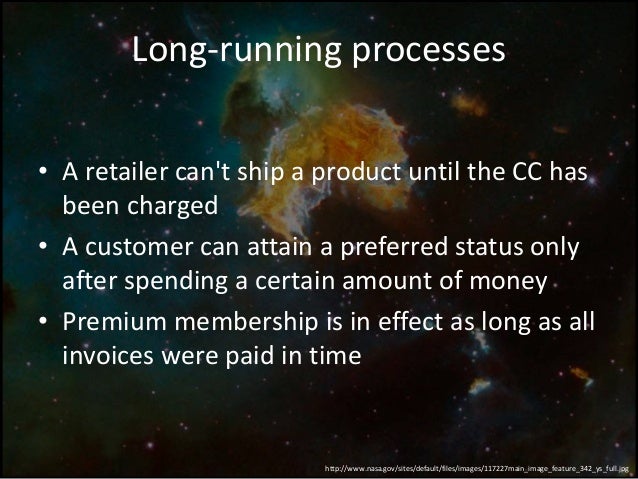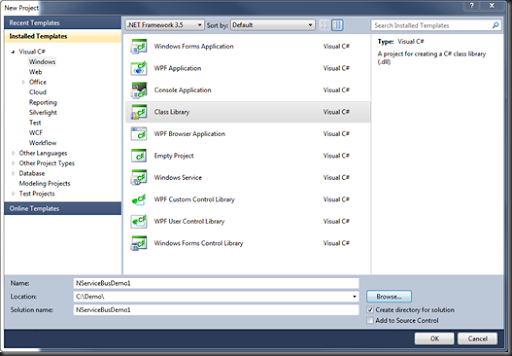

When designed and developed properly, it’s just a matter of adding another instance of an endpoint and you’ve basically scaled out your system. Scaling outĪ benefit of brokered queues is that it is very easy to scale out, using the competing consumer pattern.
#Masstransit vs nservicebus Offline#
And when your brokered queue is offline, your website likely is offline as well. Hosting your entire system in the cloud might help. Most of the time the connectivity within a single datacenter isn’t compromised. Too many times I’ve seen companies unable to send messages because they could not reach the cloud. Although that can lead to availability issues due to network issues. Another option is to turn to the cloud with Azure Service Bus or Amazon SQS. Especially when networking issues cause a partition within the cluster and you have to solve the issues that a brokered queue can’t solve for you.

For this reason you might want to set up a cluster. The drawback is that, because it’s centrally located, it can be a single point of failure. Examples of a brokered queue is RabbitMQ, Azure Service Bus or Amazon SQS. Think of a relational database as being a central component to a lot of applications, that have the need to persist information. Brokered queuesĪ lot of queueing technologies are not running locally on every machine, but rather centrally located. You can add a SAN for additional storage reliability. This all assumes that you’ve set up transactional queues to achieve this kind of reliability. MSMQ will keep trying to send the message as long as the machine is down.
#Masstransit vs nservicebus code#
Only then will the code on the other machine be able to read the message from the queue.Įven when a machine is down, the message is persisted. The other machine will receive the message and immediately persist the message to disk. The executing code can continue, while MSMQ tries to send the message to the other machine. This way it guarantees the message doesn’t get lost when the node crashes. In the Microsoft world, an old but very stable and reliable queueing technology is MSMQ. When you want to send a message to a component on another machine, MSMQ will first locally persist the message to disk. But there definitely is some knowledge needed with the subscriber which messages are published. It depends on the queuing technology used, how subscribers tell a publisher they are interested in a certain magic. This isn’t magic though.Ī publisher has no clue who will subscribe to the message, especially during design-time. Any sink can then subscribe to a message and receive the message. A source, the publisher, publishes a message and has no idea about the sinks, the subscribers. This is achieved by making use of the publish/subscribe pattern. The idea is that sources and sinks are completely decoupled. The abstract concept shows like the image on the right. There are sources and sinks, which are respectively senders and receivers of messages.

So what is a servicebus? Abstract servicebus Anyone interested could pick up random messages as it would seem fit. The abstract perspective is like any component could just send messages to something that looked like a pipeline. It also means that I literally have to do nothing in order to start getting messages flowing.The first time I read about the concept of a servicebus and saw the images, I could not figure out how it was supposed to work. That means that I have only a single place to look for in order to understand how this endpoint is behaving. That is, each end point store its own subscription directly on the queue that it is using to accept messages. (Nothing works, and the first time that this happens, you don't know why).įor Rhino Service Bus, I choose to go with a private subscription storage. I don't think that I like this very much, mainly because if you miss that, you get into some very strange situations. In both cases, we are talking about having a well known place to go looking for it. Again, we have the option to chose between either a subscription storage based on distributed cache (memcached) or a local service running it. Mass Transit handle this by treating subscriptions as a service. Just to make things interesting, for queue backed subscription storage, you now have several deployment options at your hand (private subscription storage per endpoint, shared subscription queue, etc). The two options that come out of the box with it are database backed subscription storage or a queue backed subscription storage. NServiceBus tend to do things that way :-) NServiceBus deal with this as a pluggable strategy. I find it interesting to trace the way that each of them is handling this scenario differently. All three service buses has some notion, subscriptions are important. For a pub / sub system, managing subscriptions could be classified as important.


 0 kommentar(er)
0 kommentar(er)
